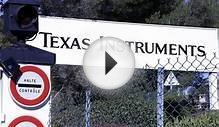SEMATECH. SEMATECH, Incorporated (SEmiconductor MAnufacturing TECHnology), headquartered in southeast Austin, Texas, was described in 1991 as a consortium made up of the United States Department of Defense, private semiconductor manufacturing companies, SEMI/SEMATECH (a corporation formed to help SEMATECH communicate with equipment and materials suppliers), Semiconductor Research Corporation (coordinating semiconductor research in universities nationwide), and the American public. Called a "technological catalyst, " the SEMATECH government-academia-industry partnership was dedicated to "fundamental change in manufacturing technology and the domestic infrastructure to provide United States semiconductor companies the capability to be world-class suppliers." Among early participants were thirty-one universities in fourteen states, along with private member companies including AT&T, IBM, Intel, Hewlett-Packard, NCR Corporation, Rockwell International, and Texas Instruments. Founded by the Semiconductor Industry Association, SEMATECH was incorporated in 1987 to advance national commercial objectives, much as the Japanese Ministry of International Trade and Industry served that nation, at a time when the semiconductor industry had become the nation's largest, employing almost 2.7 million Americans. The institution was developed after industry and government set out to restore the manufacturing leadership of the United States semiconductor industry, then threatened by foreign competitors. By 1992 SEMATECH had produced an advanced computer chip or silicon integrated circuit, along with flexible, automated tools, processes, and equipment through a process that combined the expertise of member firms at a common testing ground to produce new ideas. Commitments included a program of "precompetitive" generic research and development to apply software solutions to the nation's manufacturing problems, efforts to design factories for the twenty-first century using modeling, simulation, and computer-integrated manufacturing, and reduction of the time between new generations of technology. Initially, SEMATECH promised 800 jobs in the Austin area, half to be filled by workers from member companies, and an annual budget of $250 million made up of government and private funding. In 1993 500 full-time workers and 300 others rotating on two-year assignments were employed by the firm.
SEMATECH provided a vertically-integrated industry structure by maintaining ties between semiconductor producers, suppliers, and the United States military in a manner similar to that offered by the Joint European Submicron Silicon Initiative and various Japanese programs. It also linked major research centers and universities across the nation. According to George Kozmetsky of Austin's IC2 Institute, SEMATECH contributed to a developing "technopolis, " a city linking technology development with the public and private sectors to spur economic development. SEMATECH located in Austin because of a multi-million dollar incentive package drawn up by the University of Texas, the city, and the state government. The Austin architectural firm of Graeber, Simmons, and Cowan completed the plant's "clean room" facility, while the University of Texas System Board of Regents purchased a ninety-four-acre former Data General Corporation site, subsequently leased to SEMATECH at the cost of one dollar a year. The new facility opened in November 1988. Scheduled to become privately-funded after six years, SEMATECH began with government startup funds amounting to up to $100 million a year. Robert Noyce, cofounder of Fairchild Semiconductor and Intel, served as SEMATECH's first chief executive officer, while former IBM executive Paul Castrucci became chief operations officer. Noyce, a graduate of Grinnell College and the Massachusetts Institute of Technology noted for his populist high-tech management style, was succeeded in 1990 by William J. Spencer, formerly of Xerox Corporation. By 1993 the company faced criticism that it supported companies that originally failed to meet foreign competition, to which it responded with downsizing that reduced the number of its private member companies.
RELATED VIDEO


